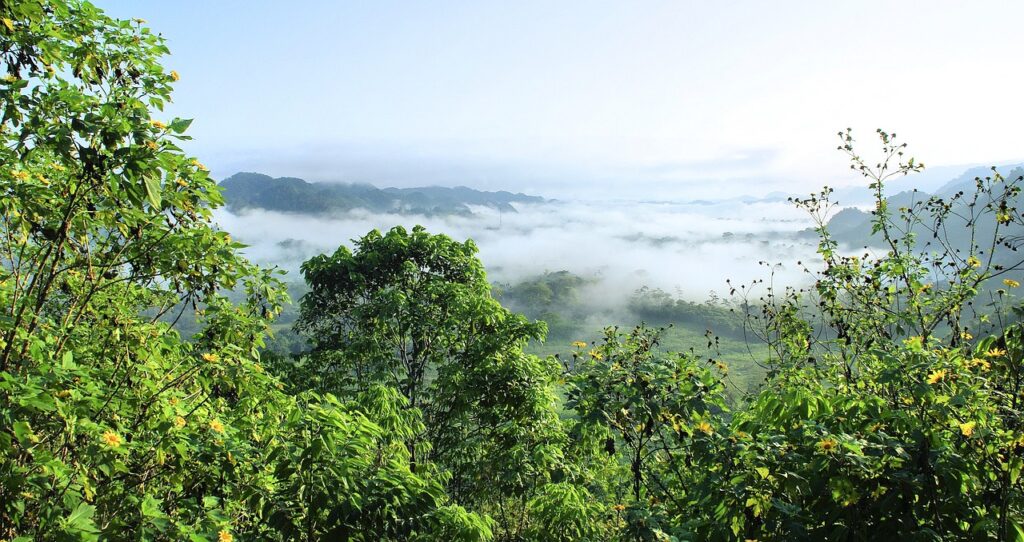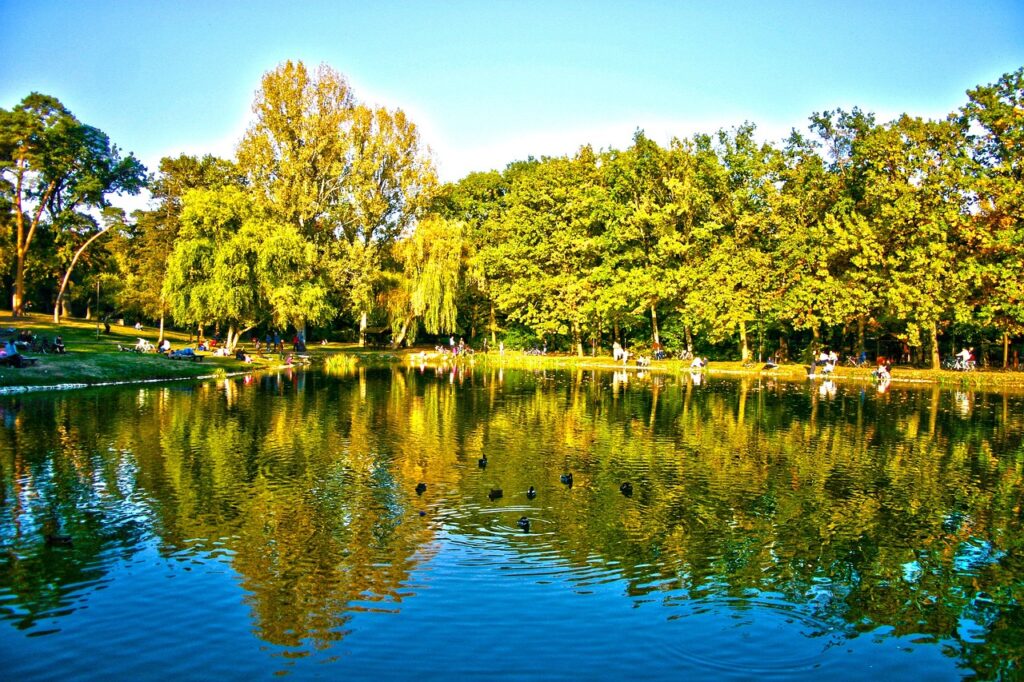Forests and Forest Ecosystems, often referred to as the lungs of our planet, are not only awe-inspiring landscapes but also vital ecosystems that support an astonishing array of life forms. They play a pivotal role in maintaining the Earth’s ecological balance by providing habitat for countless species, purifying the air we breathe, and regulating our climate. However, in today’s rapidly changing world, these ecosystems are under constant threat from deforestation, climate change, and human activities.
As stewards of the environment, it is our responsibility to protect and conserve these precious forests and the biodiversity they house. Fortunately, there is a field of study dedicated to this noble cause: forestry for biodiversity conservation. If you’re passionate about preserving our planet’s natural wonders and wish to make a positive impact, you’re in the right place.
In this article, we’ll embark on a journey through the world of forest ecosystems and explore the top 10 courses in forestry for biodiversity conservation. These courses offer valuable insights, knowledge, and skills needed to become a guardian of our forests and ensure their survival for generations to come. Whether you’re a budding conservationist, a forestry enthusiast, or someone eager to contribute to the protection of our environment, these courses will equip you with the tools to make a real difference. So, let’s delve into the heart of forest ecosystems and discover the educational pathways that can help you become a champion of biodiversity conservation.
Courses about Forest Ecosystems and Forestry for Biodiversity conservation
It appears that you’re looking for information about various courses or programs related to forest ecology, management, and biodiversity conservation at different universities. Here’s an expanded description of each of the mentioned programs:
Forest Ecology and Management for Biodiversity Conservation (Yale University): This program at Yale University is dedicated to the study and application of forest ecology and management techniques to support the conservation of biodiversity. Students enrolled in this program explore the intricate relationships between forests and the diverse species that inhabit them. They learn about sustainable forestry practices that aim to maintain healthy ecosystems while meeting human needs for resources. The curriculum likely covers topics such as forest ecosystems, wildlife conservation, forest policy, and sustainable forestry management strategies.
Tropical Forest Ecology and Management (University of Florida): The University of Florida offers a specialized program focusing on tropical forest ecology and management. This program is designed to provide students with in-depth knowledge about the unique challenges and opportunities in tropical forest ecosystems. Students here likely study topics like rainforest biodiversity, tropical forest conservation, and sustainable management practices tailored to the tropics. This program may also incorporate fieldwork or international experiences to gain practical insights into tropical forest management.
Forestry for Biodiversity Conservation (Oregon State University): At Oregon State University, the “Forestry for Biodiversity Conservation” program places a strong emphasis on the intersection between forestry practices and biodiversity preservation. Students gain a comprehensive understanding of how responsible forestry management can contribute to the protection of wildlife and plant species. The curriculum may include courses on habitat restoration, forest ecology, wildlife biology, and conservation policy, all with a focus on maintaining biodiversity.
Forestry and Natural Resources (University of California, Berkeley): The University of California, Berkeley, offers a program that encompasses a broad spectrum of topics related to forestry and natural resource management. Students likely delve into subjects such as forest ecosystems, resource conservation, land management, and sustainable practices. This program may prepare students for careers in forest management, environmental consulting, or research focused on conserving natural resources and biodiversity.
Forest Ecology and Conservation (University of Washington): The University of Washington’s “Forest Ecology and Conservation” program concentrates on the science and conservation of forest ecosystems. Students in this program explore the intricate web of ecological interactions within forests and study methods for preserving these ecosystems. Courses may cover forest hydrology, wildlife habitat analysis, and the design of conservation strategies to protect both forests and the diverse species they support.
Forest Ecology and Conservation (University of Washington): The “Forest Ecology and Conservation” program at the University of Washington delves deep into the science and practice of forest ecology and conservation. Students in this program explore the intricate relationships within forest ecosystems and learn how to design and implement conservation strategies. They gain expertise in forest management techniques that aim to balance human needs with the preservation of biodiversity, with a focus on the unique ecosystems of the Pacific Northwest.
Forestry and Wildlife Management (University of Minnesota): At the University of Minnesota, the “Forestry and Wildlife Management” program is tailored for students passionate about both forests and wildlife. This program likely covers a range of topics, including forest ecology, habitat management, wildlife conservation, and sustainable forestry practices. Students learn how to maintain and restore forest ecosystems to support diverse wildlife populations and balance the ecological needs of these interconnected systems.

Forestry and Environmental Management (Duke University): Duke University’s program in “Forestry and Environmental Management” combines the principles of forestry with a strong emphasis on environmental conservation and management. Students here explore the integration of sustainable forestry practices with environmental protection, biodiversity conservation, and natural resource management. Graduates are prepared to address complex environmental challenges while maintaining the health and vitality of forests.
Forestry and Forest Products (Michigan State University): The “Forestry and Forest Products” program at Michigan State University focuses on the utilization of forests as a valuable natural resource. Students gain insights into the sustainable management of forests for timber and non-timber products. This program likely covers forest economics, wood technology, and sustainable forestry practices while emphasizing responsible resource management and conservation.
Forestry and Natural Resources Management (University of Massachusetts Amherst): The program at the University of Massachusetts Amherst offers a comprehensive approach to “Forestry and Natural Resources Management.” Students here study the science of forests, their ecological importance, and how to manage them sustainably. The curriculum may include courses in natural resource policy, forest ecology, and the application of modern technology to assess and conserve forest ecosystems.
Forestry and Ecosystem Management (University of Georgia): The “Forestry and Ecosystem Management” program at the University of Georgia focuses on understanding and managing forest ecosystems within the context of broader ecological systems. Students will likely explore topics such as forest hydrology, ecosystem restoration, and ecological modeling. This program equips graduates with the knowledge and skills to conserve and restore ecosystems while addressing the challenges of modern forestry.
Books:
Managing Forests for Biodiversity Conservation (by Nigel Dudley, John Reed, and Angela Stolton)
Forest Ecology and Conservation (by Fred W. Cubbage, James T. Brown, and John D. Hall)
Forests and Climate Change (by John W. Battles, Thomas S. Coates, and Gary L. Stone)
Forestry for Non-Foresters (by Richard T. Tarrant)
Forestry: A Global Perspective (by John D. Hall and Gordon J. Vanclay)
The Forest Unseen: A Year’s Watch in Nature (by David George Haskell)
The Hidden Life of Trees: What They Feel, How They Communicate—Discoveries from a Secret World (by Peter Wohlleben)
Lab Girl (by Hope Jahren)
Finding the Mother Tree: Discovering the Wisdom of the Forest (by Suzanne Simard)
Gathering Moss: A Natural and Cultural History of Mosses (by Robin Wall Kimmerer)
These courses and books provide a comprehensive overview of forest ecosystems and how to manage them for biodiversity conservation. They are suitable for a variety of audiences, including students, foresters, natural resource managers, and anyone interested in learning more about forests and their importance for biodiversity.

In addition to the courses and books listed above, there are a number of other resources available to help you learn more about forest ecosystems and biodiversity conservation. You can find information on websites such as those of the United States Forest Service, the National Oceanic and Atmospheric Administration, and the World Resources Institute. You can also find a variety of articles and other publications on the topic.
If you are serious about pursuing a career in forestry or biodiversity conservation, I encourage you to take some of the courses listed above and read some of the books. These resources will give you the knowledge and skills you need to make a difference in the world.

